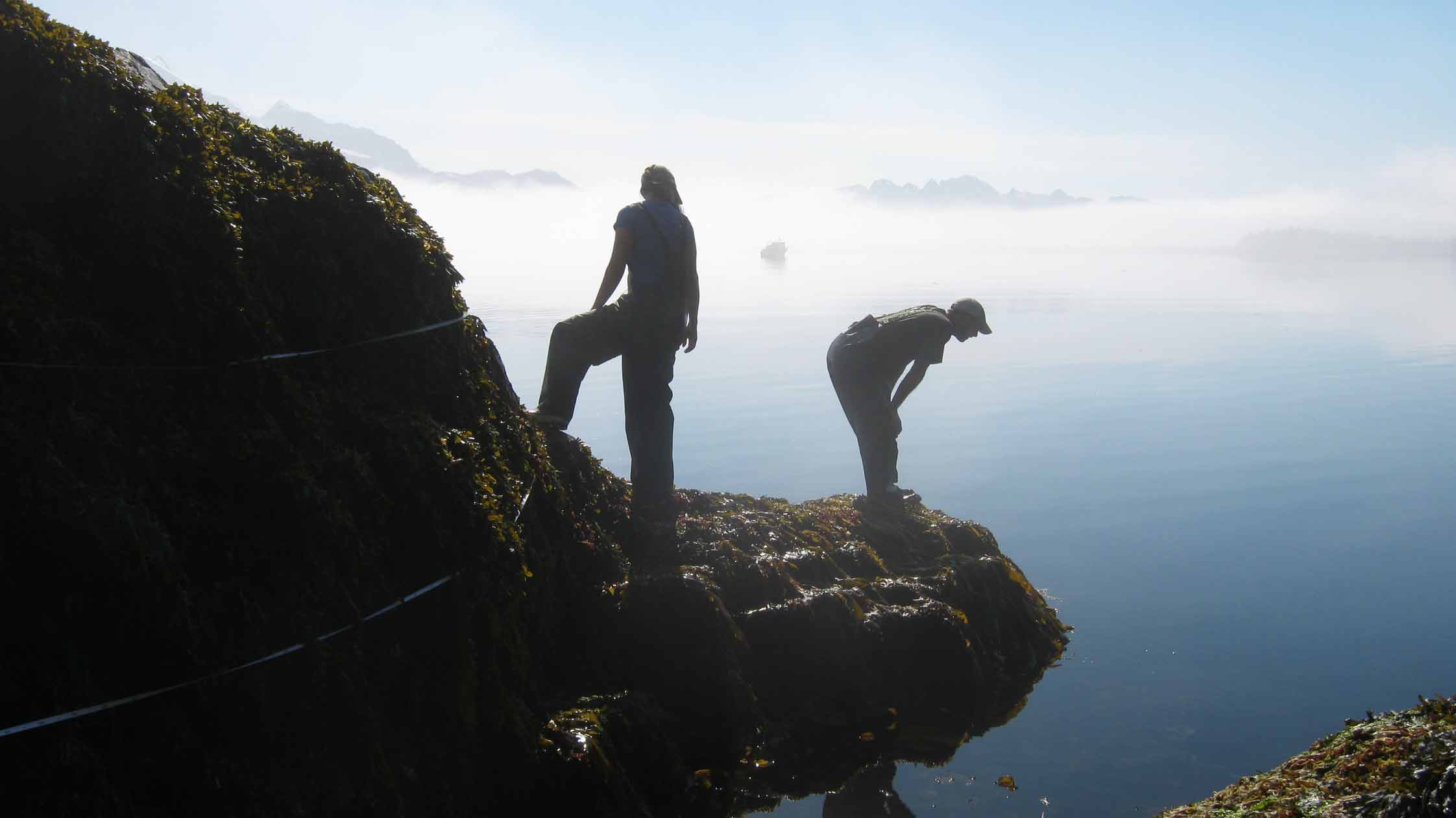We woke up early, grabbed our sampling gear, and headed into Northwestern Fiord. The night before we could see the research site from our anchorage, but the recent weather had been so warm and sunny it created the ideal conditions to develop a thick fog bank: we were forced to use our GPSs to navigate to our site. Despite the fog, the sun shone through the mist; the water bathed in a peaceful light.

Scientists observe their sampling site amid the morning fog. (Photo: NPS 2012).
At the site we quickly unloaded our gear and secured our skiffs. This was one of the last rocky intertidal sites we were sampling for the trip. By this point, we were a well-oiled machine, which we had to be to accomplish our long list of tasks before the tide came in again. While the tide makes constrains our work since it floods our sites, it also delivers nutrients to the organisms that thrive in the intertidal zone.
Our research staff, which included ecologists from the NPS Inventory and Monitoring Program, USGS, Kenai Fjords NP and other collaborators, was there to collect data that helps assess trends in abundance and distribution of important species in the intertidal. Representative species from several trophic levels are sampled, from primary producers (kelps and eelgrass) to primary consumers (limpets and chitons) to some of the predators such as sea stars and snails.
Transect tapes were rolled out, quadrats were placed, computers were booted up, and we got to work -a bustle of activity. We work furthest from shore first since it is exposed by low tide for the least amount of time. Here we have instruments that take hourly (or more frequent) temperature and salinity readings throughout the year. Sea stars are also identified and counted in this area. Sea stars prey on many of the invertebrates in the intertidal. As we move up the shore from the water, we sample kelps and other invertebrates to determine abundance and densities. At the highest region of the intertidal sampling, we count and measure the size of the limpet, Lottia persona. Limpets are an important prey species for black oystercatchers, a charismatic shorebird, in Kenai Fjords.
After several hours of work, we roll up our tapes, pack away our laptops and load the skiffs. We chat about the unique things each of us saw that morning, smiles on our faces as we think about what we have learned and seen… and the hot coffee and warm food waiting for us back on the research vessel.
